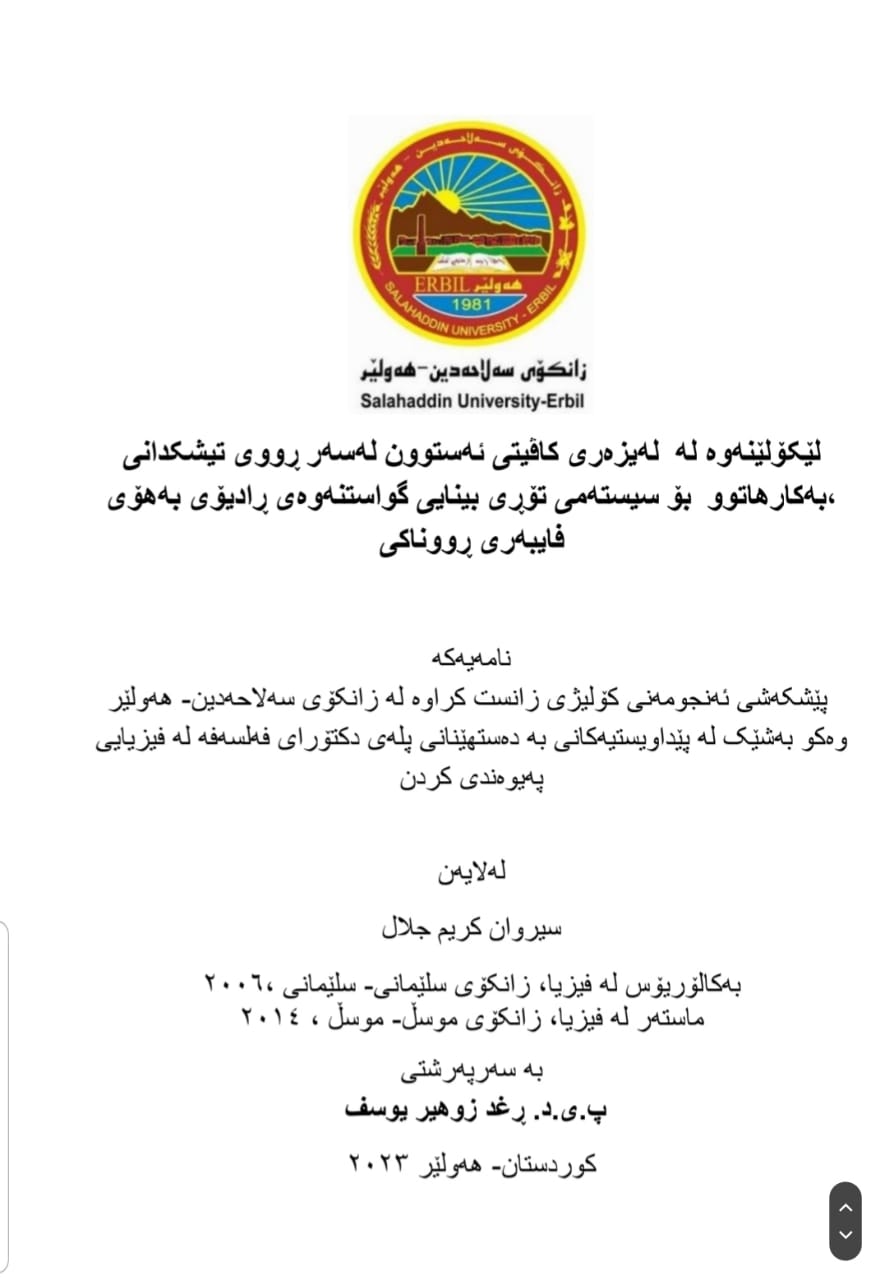
ABSTRACT
Radio systems are an integral part of 5-generation technology, which has undergone enormous changes in the last decade. This work presents a new model of the front long-haul radio over fiber (RoF) system based on vertical cavity- surface- emitting laser (VCSEL) as an alternative to the classical edge-emitting continuous wave (CW) laser sources. VCSELs have interesting properties, which include a narrow bandwidth and a high-directionally generated optical beam. A straight-forward software named; Optisystem is used to design the proposed RoF system-based simulation. Several measurements, like quality factor (Q), bit error rate (BER), eye diagram, and optical signal-to-noise- ratio (OSNR), are used performance indicators. The influences of the bias current value of the VCSEL along channel dispersion compensation fiber, fiber Bragg grating (FBG), and optical amplifier on the proposed system are demonstrated.
The proposed work includes several frames of study. First, based on an external Mach-Zehnder modulation technique, RoF system was designed for a single data user. The simulation results showed that the proposed model can support data transmission of 5 Gbps with a minimum Q-factor of around 6, up to 75 km and 200 km without dispersion compensation and in the case of using dispersion compensation fiber (DCF), respectively. The VCSEL’s bias current is of the order of 5 mA. A fair comparison has been made between the present system and the most up-to-date peer publications, which proves the superiority of the presented system model.
In the second frame of our investigation, the feasibility of incorporating the VCSEL optical source into the design of a passive optical network (PON) system that incorporates wavelength-division multiplexing (WDM) is performed. This system enables multiple subscribers (users) to simultaneously utilize a single optical fiber for long-distance data transmission.
In this scenario, several approaches are presented. First, a VCSEL with a distinctive frequency is made accessible to each of the user data in the PON system. Whereas, in the second approach, a continuous-wave (CW) laser is used to replace the VCSEL in the same PON structure. The system performance is then measured in terms of Q-factor, and it is revealed that the VCSEL-based system outperforms the system utilizing CW lasers. Moreover, to minimize the input current of around 1 mA and the system complexity, a third approach is presented in which one VCSEL with 193.1 THz is shared among multiple users. For up to 72 users, the minimum level of acceptable Q-factor has been maintained up to a link length of 180 km. In the last frame a direct modulation VCSEL-based RoF system is proposed. A maximum attainable transmission distance up to roughly 60 km at 5 Gbps is presented.
